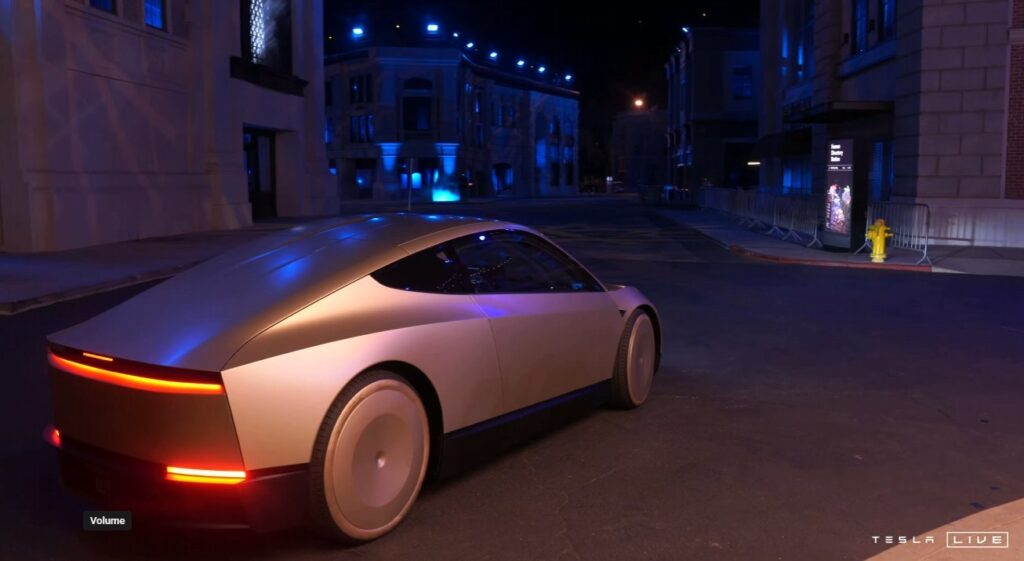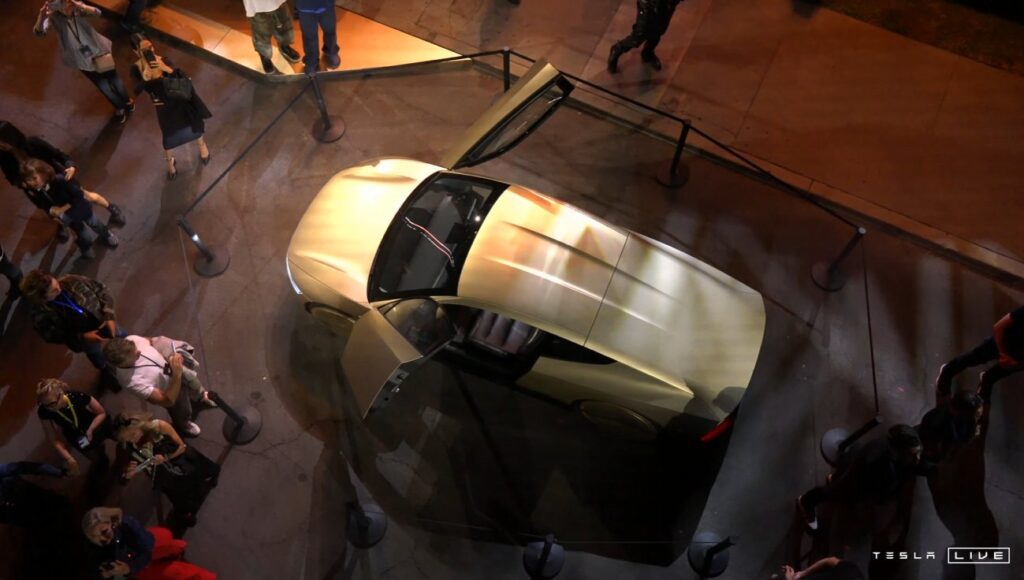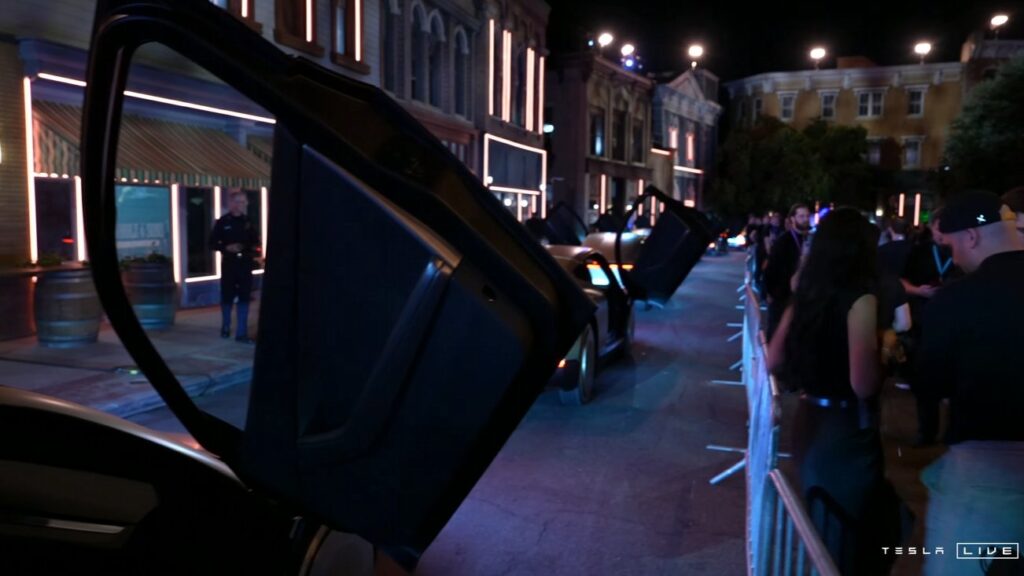Tesla has just unveiled it’s brand new Robotaxi to the world. Tesla’s latest vehicle is the most advanced yet, taking the bold step of removing the steering wheel and pedals, as they chase down a fully autonomous future.

Vehicle Design
The design of the vehicle has been the source of much speculation, but we finally know what the Robotaxi will look like.
The robotaxi features 2 seats, a full width light bar front and rear, no rear window and very large wheels (unlikely to make it to production).
Also noteworthy is the aerodynamic shape, key to vehicle efficiency, and like the Cybertruck, the Robotaxi has no door handles.
Internally, the robotaxi features a single, center-mounted display.
Musk confirmed the Robotaxi will feature HW5 computer that will have surplus compute, in order to run an AWS-style distributed workloads around AI inference.
We also learned that Tesla will implement wireless charging in the robotaxi, but didn’t go into detail about where these would be located. We also seen a preview of an automated cleaning solution where robotaxis would get cleaned automatically.


Timelines
One of our biggest questions heading into the event was around the timelines involved in shipping FSD (Unsupervised) that could power the robotaxi, as well as the production plan for trial and mass scale.
Tesla explained the timeline for release is FSD unsupervised in Texas and California in 2025 (with Model 3/Y, S/X and Cybertruck) and will be in production with the Cybercab in 2026.
Robotaxi rides
Attendees at the event were able to experience the very first fully autonomous rides in Tesla’s robotaxi at the event.
Musk confirmed they have 20x of the new robotaxis at the event, but 50x robotaxi vehicles at the event, with the additional 30 vehicles made up of Model 3 and Model Ys. This means they are running FSD (unsupervised), suggesting this can run on at least HW4.


Price (est. of price for cost to produce, cost per ride)
A key element in the success of a robotaxi platform is the cost per ride. It’s a given that the per-ride cost to the manufacturer (Tesla) will be substantially lower than competitors, but what about the rider, what will they pay?
Tesla shared the cost per ride is expected to be 20-30cents per mile.
Musk received applause when he confirmed consumers will be able to buy one. He went on to say the price is likely to be <US $30k.
